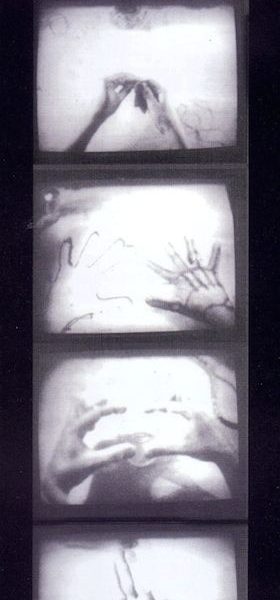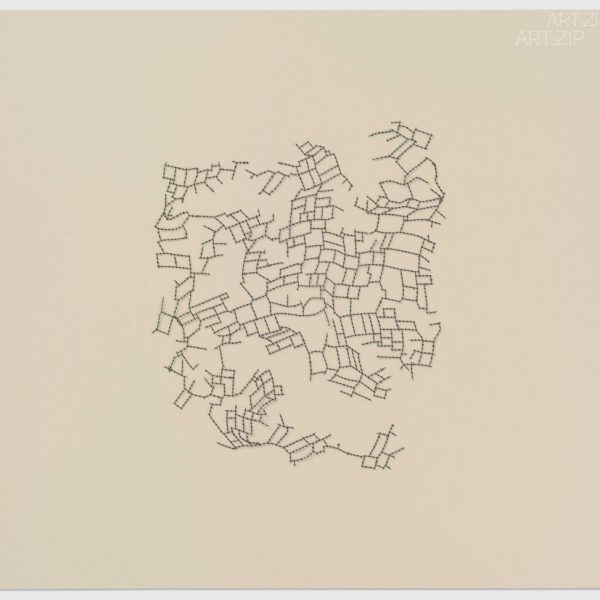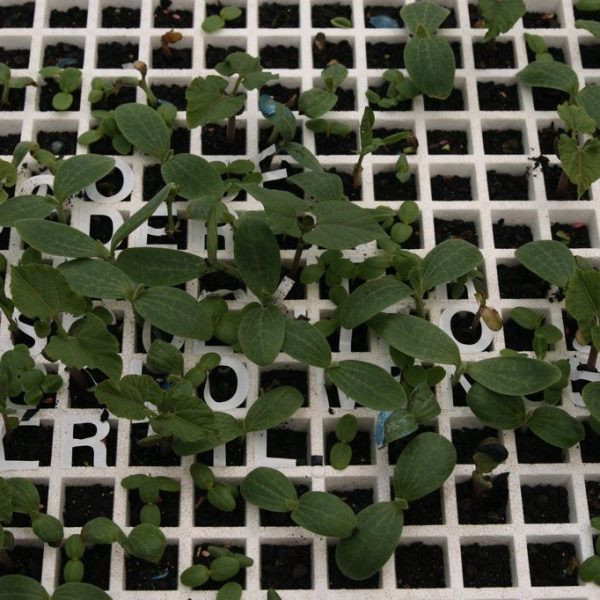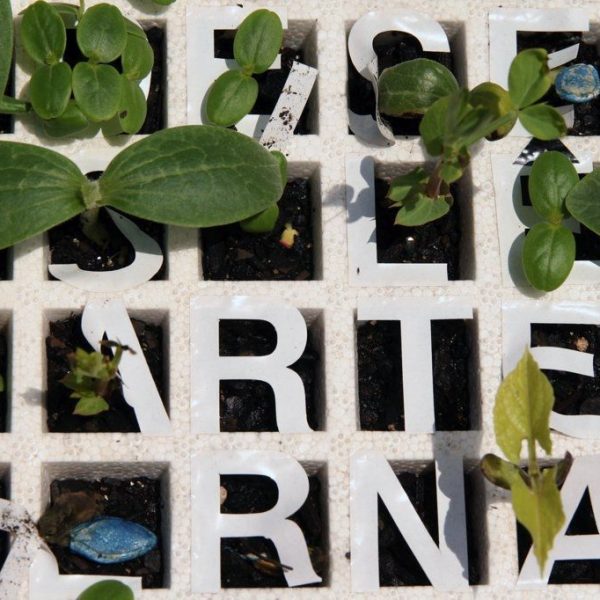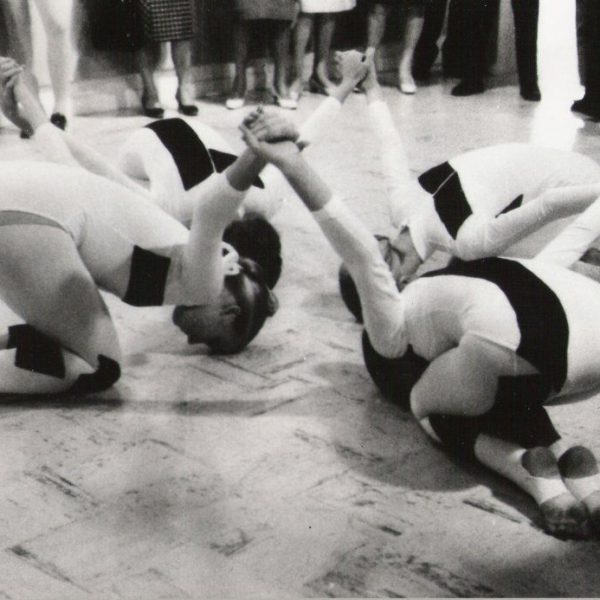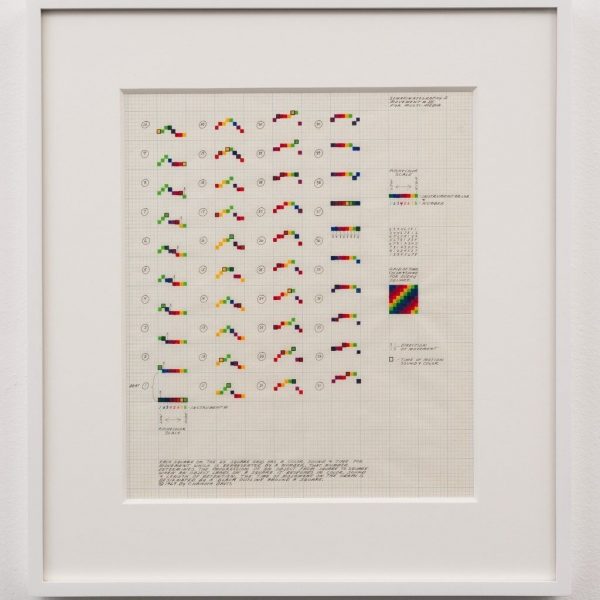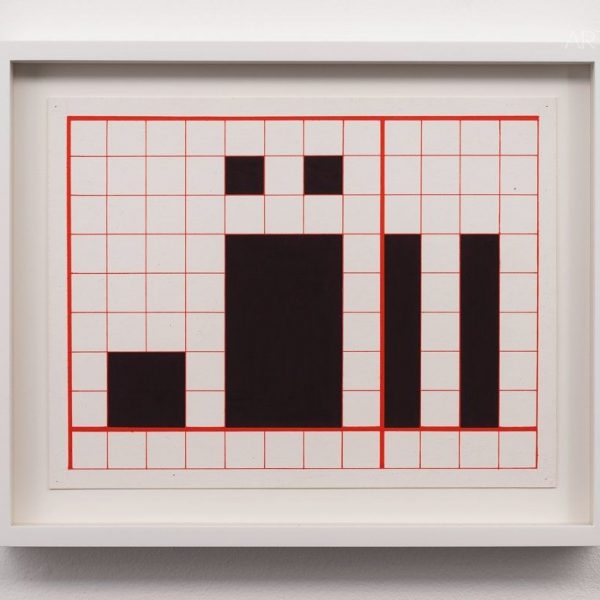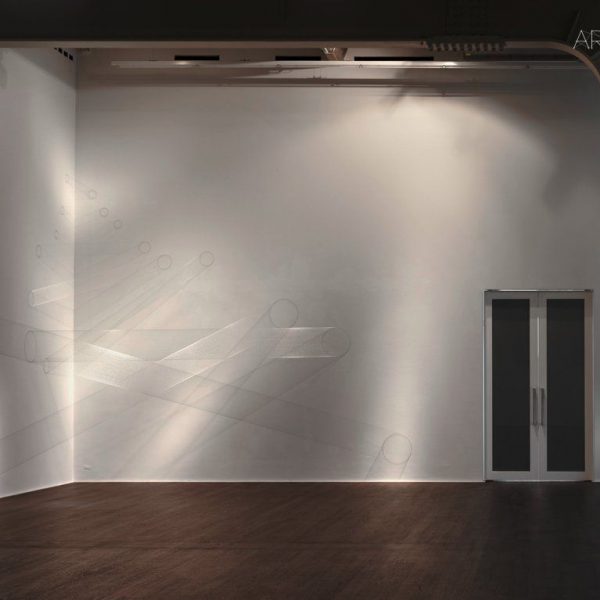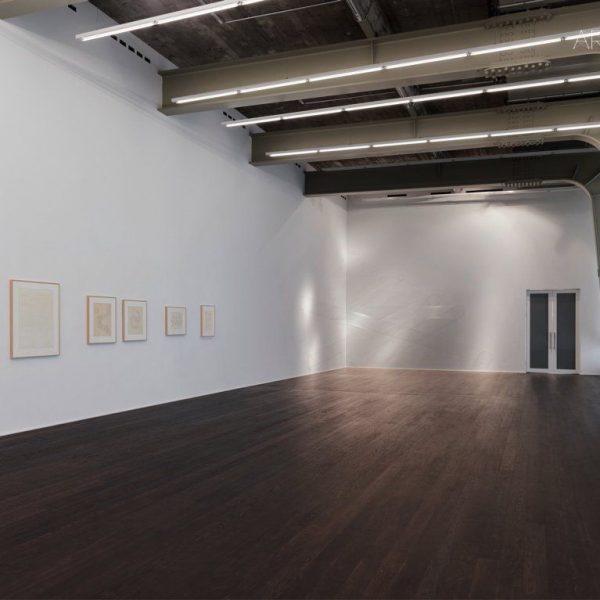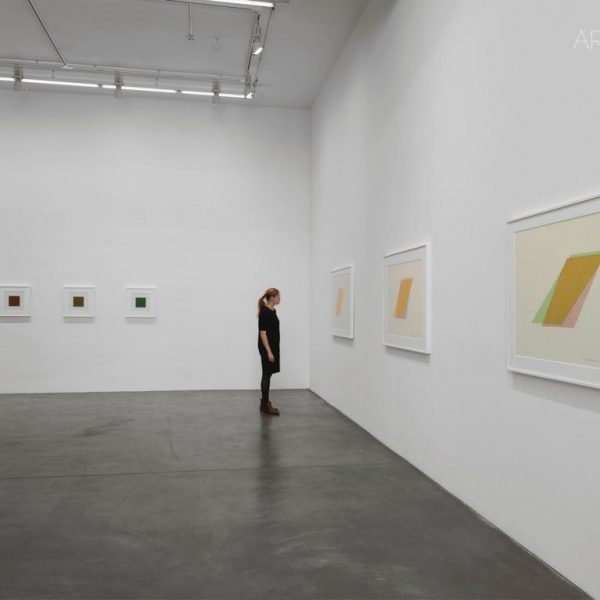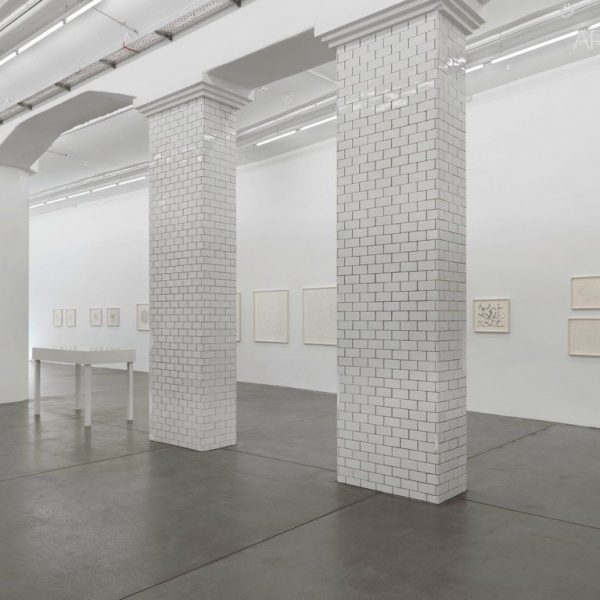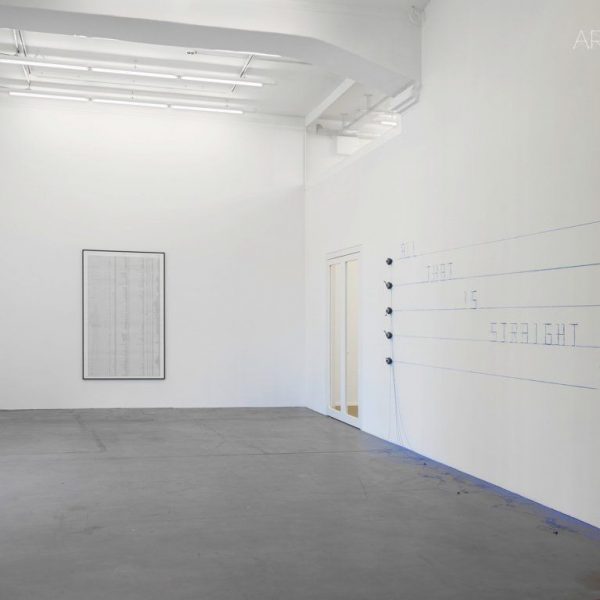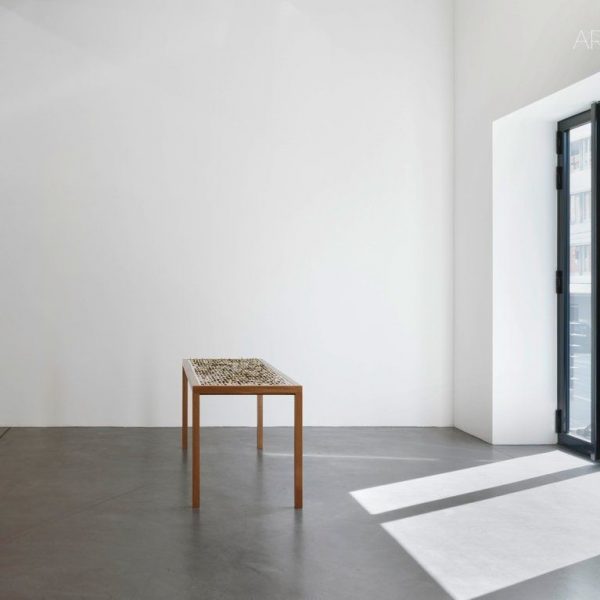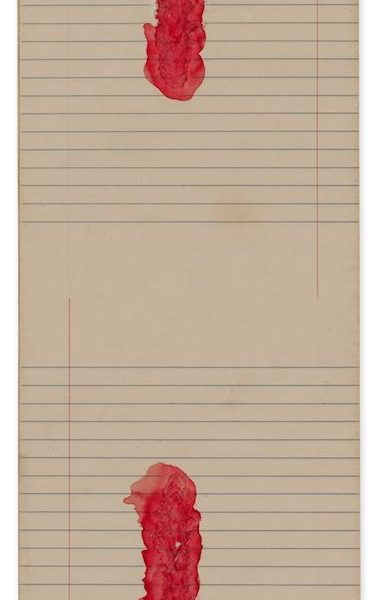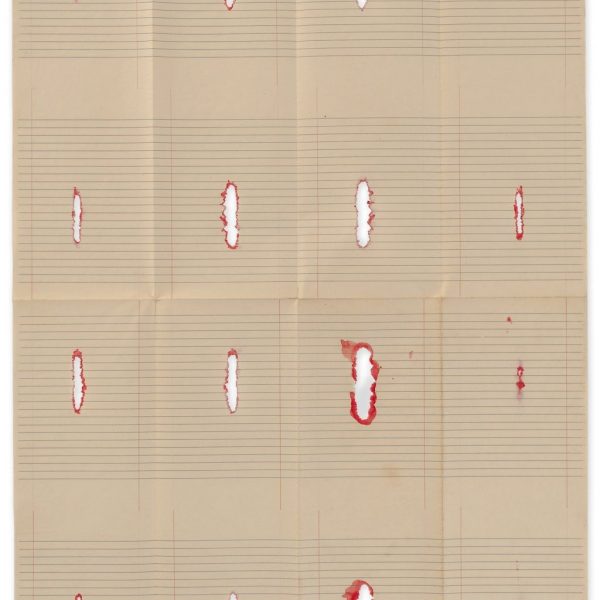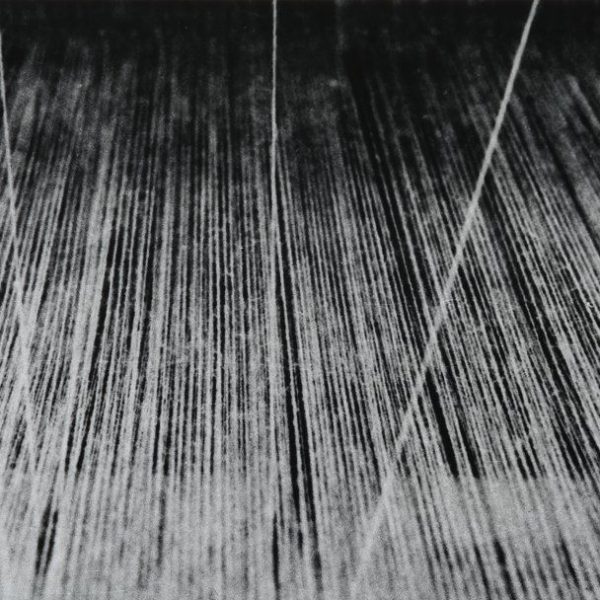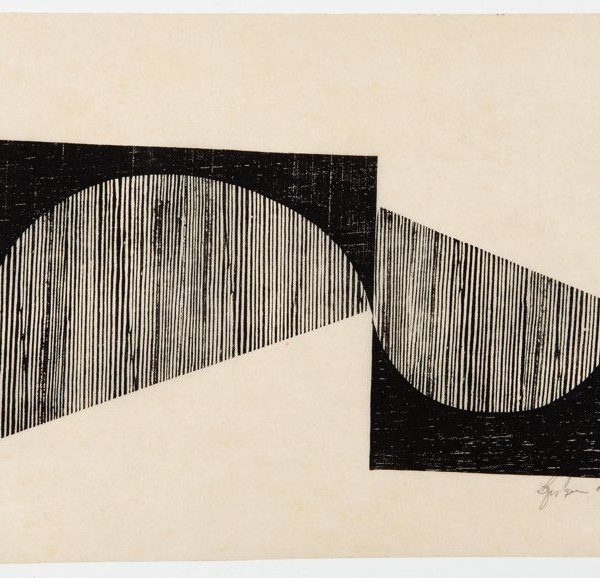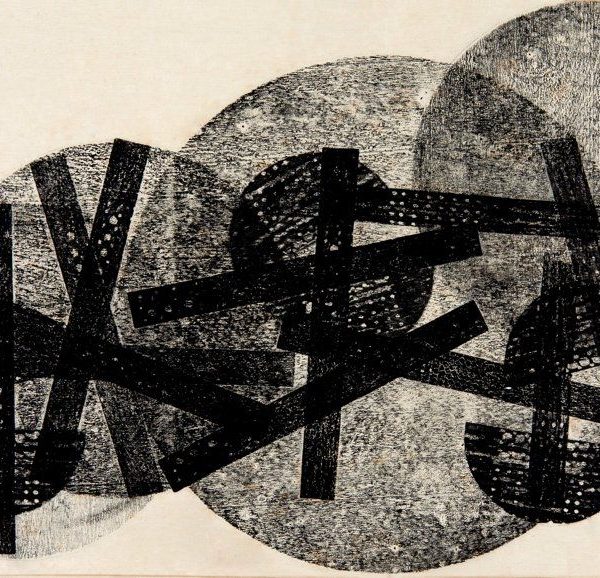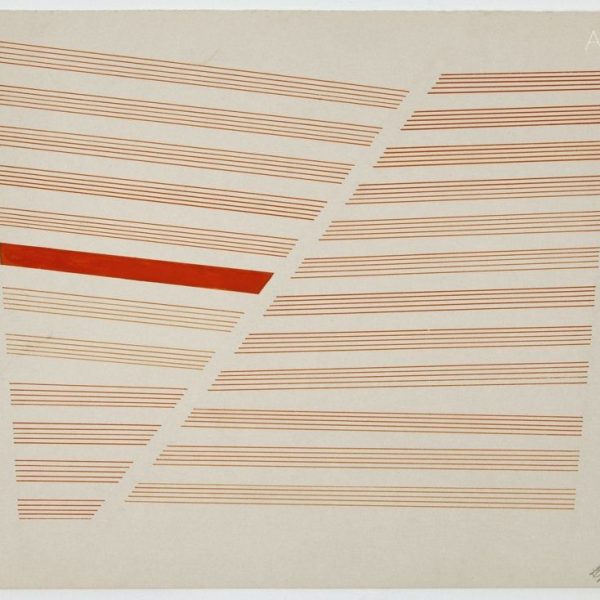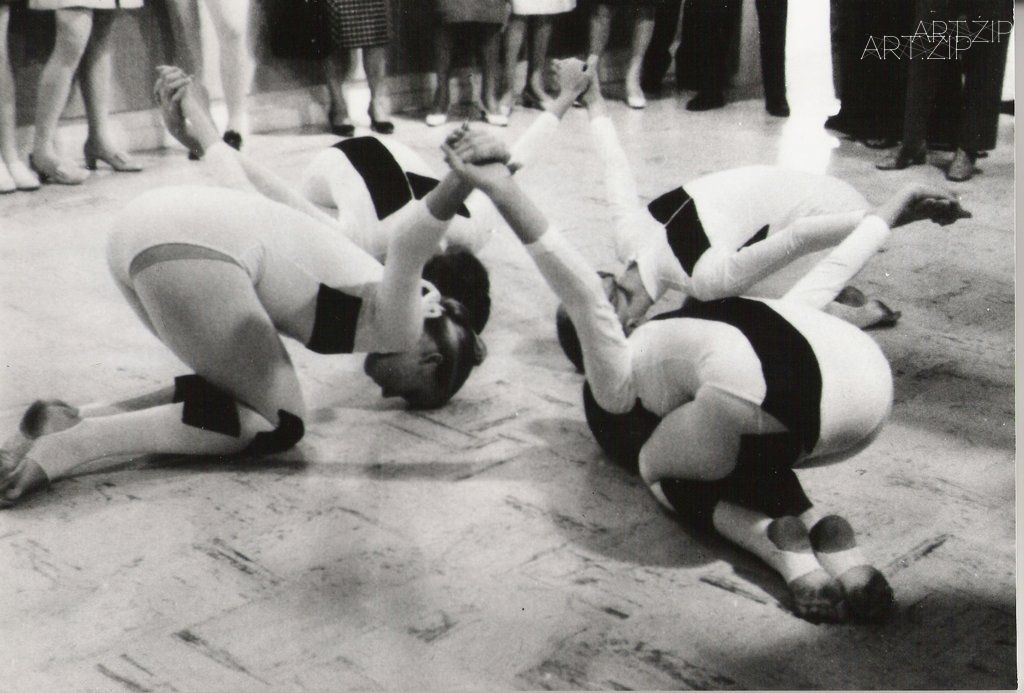
Lines, Curated by Rodrigo Moura
Hauser and Wirth, Zurich, 22 March – 31 May 2014
The End of Everything
Hauser and Wirth’s Zurich show is a positively intellectual body of non-works that appear to want to disappear from view. Beneath the curved steel ribs that elevate up and into the ceiling, and the adjoining tiles pillars, this industrial mortuary styled space could well be completely empty, were it not for the wafer thin works and cotton thread installations that resonate from the walls like the residual effects of a series of ghostly séances. In which the slightest of works of art pay homage to the original principles of European concretism, (rejecting reality for a more concentrated interest in lines and colour), and the looser abstracted interests of non-concrete art. Curated by Rodrigo Moura, the show is comprised of the work of eight international artists who were originally active in the 1950’s, and some of whom are still practicing today. Including the work of Romanian Geta Brătescu, renowned for her destabilising drawings and collaged textiles; here her 8 mm film Les Mains, 1977, shows her hands feverishly moving in front of the camera, in what is as much a tailored drawing as it is a table top performance. Colombian Johanna Calle’s, Reticulas rotas III, 2010 – 2012, is a series of wire mesh two-dimensional drawings on board, in which the delineated patterns could well serve as a crude outline for a fractured cityscape from above. While Brazilian Marilá Dardot’s vitrine styled table work, ++ 2014, appears to loosely reference a grid, as all the works do, in its flora and fauna approach to the germination of principled aesthetics.
American Channa Horwitz, interested in reductive logic, has here multiple works from 1969, one of which, At the Tone the Time will be, is a short film of what can best be described as a whole series of algorithmic actions performed by four leotarded women in front of an audience. A second, Sonakinatography is akin to a well measured thermonuclear reading of an increase in global temperatures. Much less specific, Horwitz was also preoccupied with the nature of motion in static drawing, and was clearly producing numbers of such detailed drawings. Yet there is so little of the Duchampian sense of movement that predates Horwitz’s graphs, that these works appear more coloured mathematics than anything else. Dardot’s Brazilian contemporary Ivens Machado was interested in the microscopic tremors that he might well have induced when reproducing lines on sheets of paper. Here his 1980 work Wine on ripped paper, could well be perceived as a beautifully recorded incident of the death of paper, as a drop of wine has corrosively wounded the folded paper at its heart, and when unfolded the stain takes on a more formulaic pattern.
For Mumbai based Nasreen Mohamedi, the implied details of her drawings and photographs are so microscopic, that the ‘troubled destines’ she refers to within her work might well go unmeasured, were it not for the reductive appeal of her approach. Mohamedi’s meditative untitled photographs, 1970, shows a layer of concentrated threads that criss-crosses over space. And with such diverse interests as geometry, design, abstraction and industrial production, the artists’ essential drawings and accompanying diary pages demonstrate a more scientific approach to the anatomy of creativity. The late Brazilian artist Lygia Pape, employed sculpture, film-making and engraving, in a looser participatory approach to art. The works included in the exhibition reference her original interests in concrete art; and her 1959 work Tecelar reads like a balance sheet of two opposing wood cut prints that have been drawn together by magnetic attraction. Pape’s 1955 Drawing, is another work that resembles an unwritten score sheet that is masterfully held together inspite of the slight fracturing of everything on it. Unfortunately New York artist R.H. Quaytman’s Orchard Spreadsheet, 2009, is a dreadfully dull life size document that may well serve better as a fiscal printout than a visual possibility; in a collected show of works that recalls something of the dry intellectualism of a formalist approach with a minimum of aesthetics.
Rajesh Punj, April 2014
- Geta Brătescu Les Mains 1977 8 mm Film transferred to digital media Black and white, no sound, 7’30” Courtesy the artist, Ivan Gallery, Bucharest, Galerie Barbara Weiss, Berlin
- Johanna Calle Reticulas rotas III 2010 – 2012 Cut and painted wire mesh mounted on museum board 53 x 51 cm / 20 7/8 x 20 1/8 in Courtesy the artist and Galeria Marilia Razuk
- Marilá Dardot ++ (detail) 2014 Wooden table, styrofoam cell trays, vegetable seeds, vinyl letters 80 x 216 x 78 cm / 31 1/2 x 85 x 30 3/4 in © Marilá Dardot Courtesy Galeria Vermelho, São Paulo, Brazil, 2007
- Marilá Dardot ++ (detail) 2014 Wooden table, styrofoam cell trays, vegetable seeds, vinyl letters 80 x 216 x 78 cm / 31 1/2 x 85 x 30 3/4 in © Marilá Dardot Courtesy Galeria Vermelho, São Paulo, Brazil, 2007
- Channa Horwitz At the Tone the Time will be 1969 Performance documentation 30 x 44 cm / 11 3/4 x 17 3/8 in Courtesy of the Channa Horwitz Estate and François Ghebaly
- Channa Horwitz Sonakinatography I Movement # III for Multi-media 1969 Plaka casein paint on mylar 53 x 48 cm / 20 7/8 x 18 7/8 in Courtesy of the Channa Horwitz Estate and François Ghebaly
- Channa Horwitz Language Series: Three 2005 Plaka casein paint on rag board 25 x 32 cm / 9 7/8 x 12 5/8 in Courtesy of the Channa Horwitz Estate and François Ghebaly
- Installation view, ‘LINES’, Hauser & Wirth Zürich, 2014 Courtesy the artists, Estates and Hauser & Wirth
- Installation view, ‘LINES’, Hauser & Wirth Zürich, 2014 Courtesy the artists, Estates and Hauser & Wirth
- Installation view, ‘LINES’, Hauser & Wirth Zürich, 2014 Courtesy the artists, Estates and Hauser & Wirth
- Installation view, ‘LINES’, Hauser & Wirth Zürich, 2014 Courtesy the artists, Estates and Hauser & Wirth
- Installation view, ‘LINES’, Hauser & Wirth Zürich, 2014 Courtesy the artists, Estates and Hauser & Wirth
- Installation view, ‘LINES’, Hauser & Wirth Zürich, 2014 Courtesy the artists, Estates and Hauser & Wirth
- Ivens Machado Machucado e Curado (Série Inscrito) (detail) 1980 Wine on ripped paper 86.7 x 59.2 cm / 34 1/8 x 23 1/4 in © Ivens Machado Courtesy the artist, Galeria Fortes Vilaça and Hauser & Wirth Photo: Stefan Altenburger Photography Zürich
- Ivens Machado Machucado e Curado (Série Inscrito) 1980 Wine on ripped paper 86.7 x 59.2 cm / 34 1/8 x 23 1/4 in © Ivens Machado Courtesy the artist, Galeria Fortes Vilaça and Hauser & Wirth Photo: Stefan Altenburger Photography Zürich
- Nasreen Mohamedi Untitled ca. 1970 Black and white photograph 22.8 x 38.1 cm / 9 x 15 in © Estate of Nasreen Mohamedi / Courtesy of Talwar Gallery
- Lygia Pape Tecelar 1959 Woodcut on Japanese paper 30.5 x 49.5 cm / 12 x 19 1/2 in Courtesy the Lygia Pape Estate and Galeria Graça Brandăo
- Lygia Pape Tecelar 1959 Woodcut on Japanese paper 28.8 x 43.2 cm / 11 3/8 x 17 in Courtesy the Lygia Pape Estate and Galeria Graça Brandăo
- Lygia Pape Drawing 1955 Ink on Japanese paper 25 x 35 cm / 9 7/8 x 13 3/4 in Courtesy the Lygia Pape Estate and Galeria Graça Brandăo

